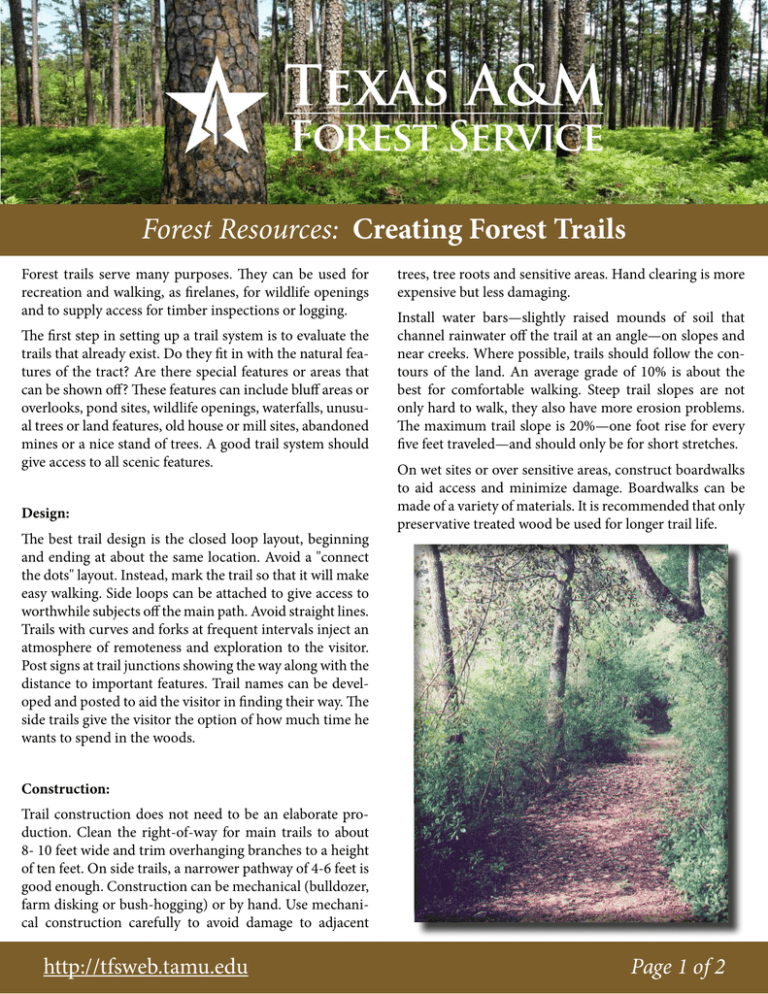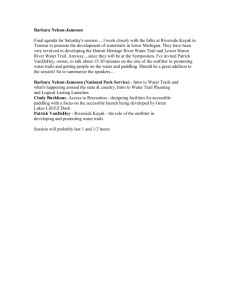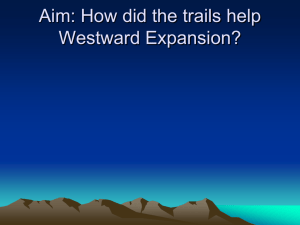Forest Resources:
advertisement

Forest Resources: Creating Forest Trails Forest trails serve many purposes. They can be used for recreation and walking, as firelanes, for wildlife openings and to supply access for timber inspections or logging. The first step in setting up a trail system is to evaluate the trails that already exist. Do they fit in with the natural features of the tract? Are there special features or areas that can be shown off? These features can include bluff areas or overlooks, pond sites, wildlife openings, waterfalls, unusual trees or land features, old house or mill sites, abandoned mines or a nice stand of trees. A good trail system should give access to all scenic features. Design: The best trail design is the closed loop layout, beginning and ending at about the same location. Avoid a "connect the dots" layout. Instead, mark the trail so that it will make easy walking. Side loops can be attached to give access to worthwhile subjects off the main path. Avoid straight lines. Trails with curves and forks at frequent intervals inject an atmosphere of remoteness and exploration to the visitor. Post signs at trail junctions showing the way along with the distance to important features. Trail names can be developed and posted to aid the visitor in finding their way. The side trails give the visitor the option of how much time he wants to spend in the woods. trees, tree roots and sensitive areas. Hand clearing is more expensive but less damaging. Install water bars—slightly raised mounds of soil that channel rainwater off the trail at an angle—on slopes and near creeks. Where possible, trails should follow the contours of the land. An average grade of 10% is about the best for comfortable walking. Steep trail slopes are not only hard to walk, they also have more erosion problems. The maximum trail slope is 20%—one foot rise for every five feet traveled—and should only be for short stretches. On wet sites or over sensitive areas, construct boardwalks to aid access and minimize damage. Boardwalks can be made of a variety of materials. It is recommended that only preservative treated wood be used for longer trail life. Construction: Trail construction does not need to be an elaborate production. Clean the right-of-way for main trails to about 8- 10 feet wide and trim overhanging branches to a height of ten feet. On side trails, a narrower pathway of 4-6 feet is good enough. Construction can be mechanical (bulldozer, farm disking or bush-hogging) or by hand. Use mechanical construction carefully to avoid damage to adjacent http://tfsweb.tamu.edu Page 1 of 2 Forest Resources: Creating Forest Trails Try to avoid wet soils. Muddy areas can become very mucky, causing considerable sedimentation to the water system, and are much harder to maintain. If you must cross streams, use a bridge or ford with firm soils or crushed rock. The surface of the trail can vary. Unless the trail is also used as a firelane, a light layer of leaf litter gives the most soil protection. Wood chips or pea gravel can also be used to cover trail beds. It is not recommended to pave trails unless very heavy use is expected. For many people, the presence of concrete or asphalt takes away from the natural appearance of the woods. Forest management areas should also be included. Erect signs explaining work done at a site. Thinning areas and even small cleared areas are interesting. Building a simple gazebo or wooden bench at the site can enhance scenic overlooks. This structure invites the visitor to rest and admire the view. It can also provide a point of shelter from sudden summer thunderstorms. Satisfaction can be gained from showcasing stewardship practices to other landowners that visit. If the public may access trails, then consider the liabilities. Liability insurance coverage may be needed for injuries incurred. Consider posting warning signs or no trespass signs to limit liability. Features: Maintenance: Trails should show off the good features of the property but in an unobtrusive way. Woodland openings, such as food plots or meadows, are excellent places for observing wildlife. It is best if trails skirt openings, using natural cover to help "hide" the visitor from any wildlife. An observation blind of simple wood panel or woven wood slats provides good wildlife observation. Trails should be checked regularly. Any erosion problems should be corrected. Inspect and evaluate the signage to make sure the directions they give are clear to someone unfamiliar with the trail. Once or twice a year, prune trees and shrubs one to two feet from trail edges, and check for any adjacent or overhanging hazards. http://tfsweb.tamu.edu Page 2 of 2




